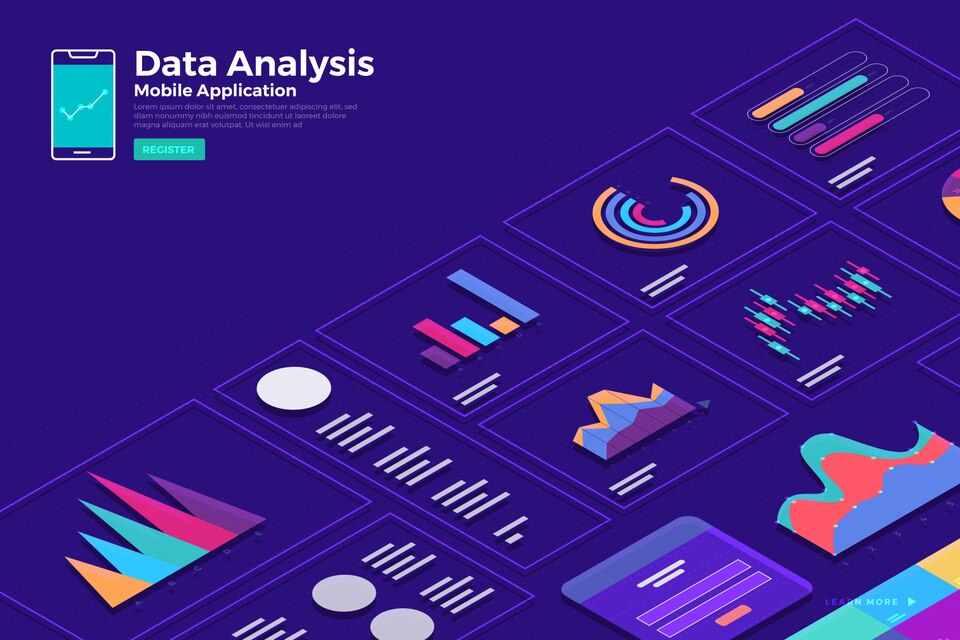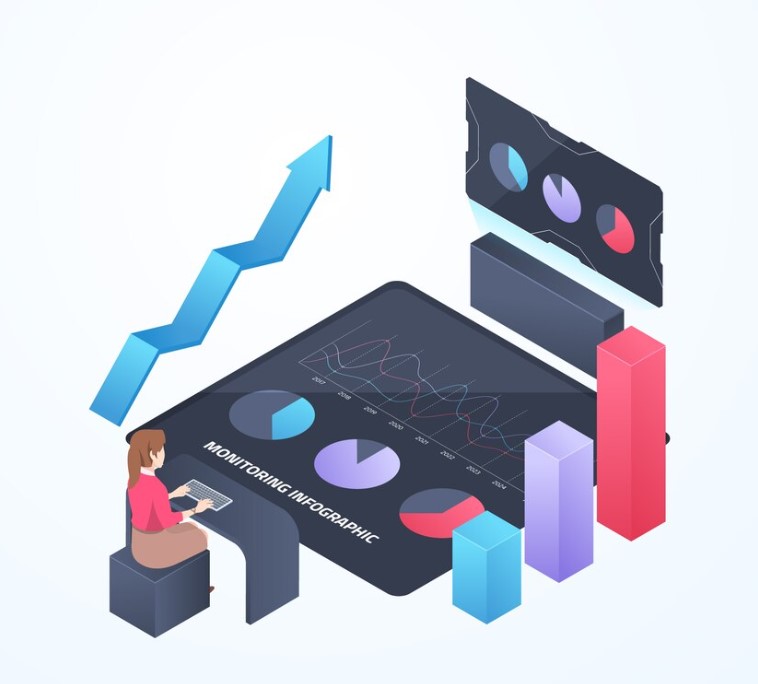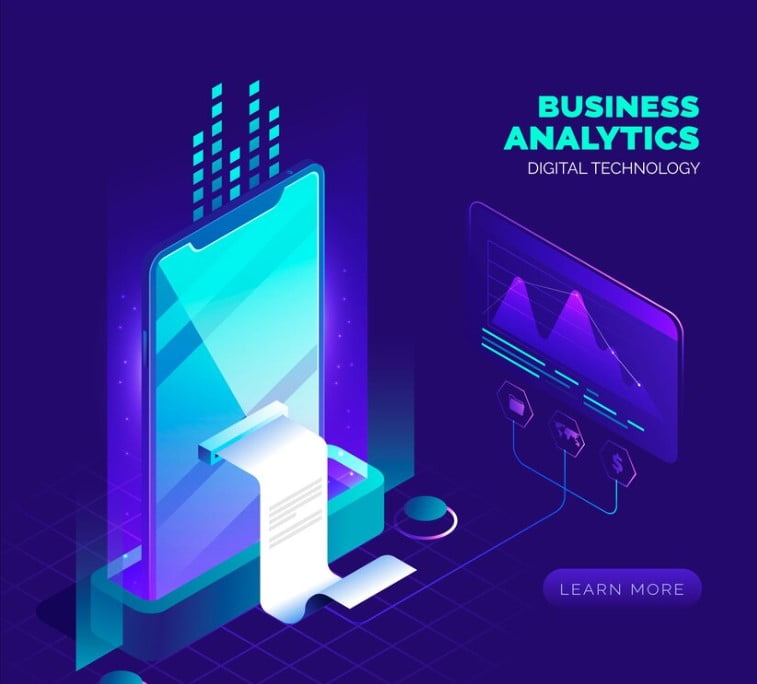As a business leader, you’re well aware that data powers the modern world. But with so much information at your fingertips, it can be challenging to separate signal from noise and turn that data into actionable insights. That’s where analytics big data comes in a powerful tool to help you navigate vast quantities of data and interpret it in ways that give you a competitive edge in the marketplace.
In this article, we’ll explore the fundamentals of analytics big data and its importance in today’s data-driven world. We’ll provide insights into how organizations can leverage big data analytics to drive business success, showcasing real-world examples of how industries are using data insights to transform operations, improve customer experiences, and drive innovation. Along the way, we’ll highlight best practices for implementing big data analytics and provide tips and strategies for maximizing its value. So, let’s dive into the world of analytics big data and discover why it is crucial to embrace data-driven decision-making for your future success.
Table of Contents
Understanding the Power of Data Analytics

In today’s data-driven world, organizations are collecting massive amounts of data from various sources. However, without proper analysis, this data remains meaningless and fails to provide any insights. This is where data analytics comes in. By using advanced techniques and tools, data analytics allows businesses to make sense of their data and extract useful information.
The concept of data analytics refers to the process of examining large datasets to uncover hidden patterns, correlations, and trends. It involves digging deeper into data to gain a better understanding of what it means and how it can be utilized to drive business success. Data analytics is a crucial component of big data analysis, as it enables organizations to extract actionable insights from large amounts of data.
The significance of data analytics cannot be overstated. It allows businesses to make data-driven decisions based on factual evidence, rather than relying on intuition or guesswork. By analyzing data, organizations can identify areas that require improvement, forecast future trends, and optimize their operations.
The Role of Big Data Analytics
Big data analytics is an integral part of data analytics, as it involves analyzing vast amounts of data to uncover hidden insights. It requires specialized tools and techniques, such as machine learning, natural language processing, and predictive analytics, to make sense of complex datasets. By using big data analytics, organizations can gain a competitive advantage by leveraging insights that were previously unavailable.
However, big data analytics comes with its own set of challenges. With so much data available, it can be hard to identify what is important and what is not. Additionally, when working with big data, the volume, velocity, and variety of data can cause technical challenges that need to be overcome.
Despite these challenges, the power of data analytics, especially big data analytics, cannot be overlooked. By leveraging analytics tools and techniques, organizations can make informed decisions that drive business success. Whether it’s identifying customer trends, streamlining operations, or improving product development, data analytics has the potential to transform business operations and drive innovation.
Leveraging Big Data Analytics for Business Success

In today’s data-driven world, the ability to leverage big data analytics can give your organization a competitive edge in the marketplace. The process of data analysis helps organizations extract valuable insights from large datasets and make data-driven decisions.
The Importance of Data Analysis
Data analysis is the key to unlocking the value of big data analytics. Through the use of analytical tools and techniques, organizations can gain a deeper understanding of their data, identify patterns, and make informed decisions.
By analyzing customer data, for example, companies can gain insights into customer behavior, preferences and identify areas for improvement. These insights can then be applied to optimize marketing strategies, improve the development of new products, or enhance overall customer experiences.
Making Data-Driven Decisions
Big data analytics can help organizations make data-driven decisions that lead to business success. By analyzing data trends, organizations can identify opportunities for growth and optimization. They can also use predictive analytics to identify potential risks and challenges, thereby mitigating them before they become problematic.
For example, retailers can use big data analytics to optimize their supply chains by analyzing trends in product demand and identifying opportunities to reduce inefficiencies in the delivery process. Similarly, healthcare organizations can use data analytics to improve patient outcomes by identifying trends and patterns that lead to better treatment options.
The Process of Data Mining

Big data analysis involves analyzing massive datasets to extract valuable insights that inform business decisions. Data mining is a crucial step in this process, involving the use of various techniques and algorithms to extract useful information from large data sets.
The process of data mining involves several stages:
- Data selection: This involves identifying relevant data sources and variables that will be used in the analysis.
- Data preprocessing: In this stage, the data is cleaned, transformed, and formatted to ensure that it is uniform and ready for analysis.
- Data transformation: Here, the data is transformed into a format that can be used for modeling and analysis.
- Data mining: This involves applying various mining techniques and algorithms to extract useful patterns and insights from the dataset.
- Pattern evaluation: In this stage, the patterns and insights generated are evaluated against business objectives to assess their relevance.
- Knowledge representation: Finally, the patterns and insights are visualized and communicated in a way that is easily understandable to stakeholders.
The importance of data mining in big data analysis cannot be overstated. It enables businesses to uncover hidden insights, patterns, and correlations that would otherwise be difficult to detect. By leveraging data mining techniques and algorithms, businesses can gain a competitive edge by making data-driven decisions based on valuable insights.
The Role of Data Visualization in Analytics
When it comes to big data analysis, data visualization plays a crucial role in facilitating decision-making and communicating insights effectively. Data visualization tools enable you to create visual representations of complex data, making it easier to identify patterns, trends, and outliers.
With data visualization, you can transform raw data into easy-to-understand charts, graphs, and dashboards. This allows you to quickly assess large datasets and identify the most important information, helping you to make data-driven decisions with confidence.
Additionally, data visualization tools enable you to share your findings in a way that is meaningful and engaging to your audience. By presenting data visually, you can convey complex insights in a way that is easy to digest and understand.
In short, data visualization is an essential component of big data analysis. It allows you to transform raw data into actionable insights that can drive business success.
Overcoming Challenges in Big Data Analytics
While big data analytics offers tremendous potential for unlocking valuable insights, it also presents several challenges that organizations must overcome to derive meaningful data insights. Some of these challenges include:
- The sheer volume of data that must be processed and analyzed
- The complexity of data, including unstructured and disparate data sources
- The need for skilled data analysts and data scientists to interpret and analyze data
- The risk of data breaches and privacy violations
- The difficulty of integrating data tools and technologies into existing IT infrastructure
To overcome these challenges, organizations can implement several strategies:
- Invest in advanced data analytics tools and technologies that can process large volumes of data quickly and accurately
- Develop a comprehensive data governance framework that ensures data security, privacy, and compliance
- Train and hire skilled data analysts and data scientists who can extract valuable insights from complex datasets
- Employ data visualization techniques to communicate insights more effectively and help stakeholders make informed decisions
- Continuously measure and analyze the impact of big data analytics on business operations and outcomes to ensure ROI
By implementing these strategies, organizations can overcome the challenges associated with big data analytics and derive valuable data insights that drive business success.
The Impact of Big Data Analytics on Industries
The use of big data analytics has revolutionized various industries, delivering insights that enable organizations to make data-driven decisions. Below are examples of industries that have benefited from big data analytics:
Retail
Retailers have been able to gain customer insights by analyzing big data generated by online transactions, social media, and in-store purchases. These insights help retailers personalize their marketing campaigns, optimize pricing strategies, and forecast demand to minimize inventory costs.
Healthcare
Healthcare providers have utilized big data analytics to improve patient outcomes by facilitating a more personalized approach to treatment. With the data insights, they can identify patient-specific risk factors and adjust treatment plans accordingly. Additionally, healthcare providers can leverage data analytics to optimize operational costs and streamline processes.
Manufacturing
Manufacturers can use big data analytics to detect patterns in production, identify defects or inefficiencies, and make data-driven changes to their processes. The insights enable manufacturers to optimize their operations, minimize downtime, and reduce costs.
As big data analytics continues to evolve, more industries will be able to identify new ways to enhance their operations and create a competitive advantage.
Best Practices for Implementing Big Data Analytics
Implementing big data analytics can be a daunting task for organizations of all sizes, but with the right strategies in place, it can be a powerful tool for driving business success. Here are some best practices to consider when implementing big data analytics:
Data Governance:
Establishing a robust data governance framework is essential for ensuring that data is accurate, consistent, and secure. This involves defining policies and procedures for data management, data quality, and data privacy, as well as establishing clear roles and responsibilities for data stewardship.
Data Quality:
Quality data is critical for accurate analysis. To ensure data quality, organizations should implement processes for data cleansing, standardization, and validation. These processes can help identify and correct errors in data, resulting in more reliable insights.
Data Privacy:
Data privacy is a growing concern for organizations, and it’s important to ensure that all data use is compliant with relevant laws and regulations. Organizations should implement policies and procedures to protect sensitive data, such as personal information, and ensure that it is stored and managed securely.
Building a Successful Analytics Framework:
Establishing a successful analytics framework involves identifying business goals and objectives, selecting appropriate analytics tools and technologies, and creating a roadmap for implementation. Organizations should consider the skills and expertise required for successful implementation and identify any training needs for employees.
By following these best practices, organizations can unlock the full potential of big data analytics to derive valuable data insights and drive meaningful business outcomes.
The Future of Analytics Big Data
The field of analytics big data is rapidly evolving, and new developments in technology are poised to transform the landscape even further in the years ahead. Here are a few of the key trends to keep an eye on:
Artificial Intelligence and Machine Learning
As the volume of data continues to grow, the use of artificial intelligence (AI) and machine learning (ML) algorithms is becoming increasingly important for unlocking insights. AI and ML allow data analytics tools to identify patterns and make predictions, enabling businesses to stay ahead of the curve.
Edge Computing
Edge computing is a distributed computing paradigm that brings computation and data storage closer to the location where it is needed. This approach has significant applications in analytics big data, as it allows businesses to process vast amounts of data in near real-time.
Blockchain Technologies
Though it’s most often associated with cryptocurrency, blockchain technology has significant applications in analytics big data as well. By providing a secure, decentralized database, blockchain can enable businesses to share data more easily and securely, while also ensuring data integrity and transparency.
Furthermore, blockchain technology offers unparalleled transparency in supply chain management. Through its immutable ledger system, every transaction and movement of goods can be recorded and tracked, reducing the risk of fraud and increasing trust among stakeholders. This transparency not only enhances efficiency but also fosters accountability throughout the supply chain.
Moreover, the integration of blockchain with Internet of Things (IoT) devices opens up new possibilities for data collection and management. With IoT sensors connected to blockchain networks, businesses can securely gather and transmit real-time data from various sources, enabling more informed decision-making and proactive problem-solving. This convergence of technologies revolutionizes data management practices, paving the way for smarter, more interconnected systems in the digital age.
More Comprehensive Data Visualization
Data visualization tools are becoming more sophisticated by the day, and are likely to continue to evolve rapidly in the years ahead. From virtual reality to 3D visualizations, the future of analytics big data is likely to be increasingly reliant on visual representations of complex data sets.
As these and other trends continue to transform the field of analytics big data, it’s clear that the importance of this burgeoning field is only set to grow. By staying up-to-date with the latest developments and investing in cutting-edge technologies, businesses can position themselves for long-term success.
Maximizing the Value of Analytics Big Data
In order to make the most of analytics big data, continuous learning, experimentation, and adaptation are key. Here are some tips and strategies that can help you maximize the value of analytics big data:
- Focus on the right data: With so much data available, it’s important to identify the most relevant and useful data sets for your organization’s goals.
- Invest in data quality: Ensure that the data is accurate, clean, and consistent to derive meaningful insights and make informed decisions.
- Use data visualization: Presenting data in a visually engaging format can help you quickly identify patterns, relationships, and trends.
- Implement predictive analytics: By using predictive modeling, you can anticipate future trends and outcomes to optimize decision-making.
- Ensure accessibility: Make sure your analytics big data is accessible to those who need it, whether it’s through dashboards, reports, or other means.
- Collaborate across departments: Encourage cross-functional collaboration to tap into diverse perspectives and expertise for better insights and decision-making.
By following these guidelines and constantly fine-tuning your data strategy, you can unlock the full potential of analytics big data to drive business success and gain a competitive edge in the marketplace.
Conclusion
Analytics big data is the new norm in the data-driven landscape, where businesses have the potential to gain valuable insights by analyzing massive amounts of data available. Through data analytics and big data analysis, hidden patterns and trends can be unraveled, leading to informed, data-driven decisions.
In this article, we explored the significance of data analytics and big data analysis for businesses to drive success. We discussed the process of data mining, the importance of data visualization, and the challenges associated with big data analytics. We also examined the impact of big data analytics on various industries and provided best practices for its implementation.
The future of analytics big data looks bright, with emerging technologies and methodologies that will shape the future of data analytics and drive further insights. To maximize the value of analytics big data, it’s crucial to continuously learn, experiment, and adapt to stay ahead in the data-driven landscape.
In conclusion, analytics big data presents endless possibilities for businesses to make data-driven decisions, gain insights, and achieve success. Embrace the power of data analytics, big data analysis, data insights, and data-driven decisions, along with the importance of data mining and data visualization, to unlock the full potential of big data in your organization.




